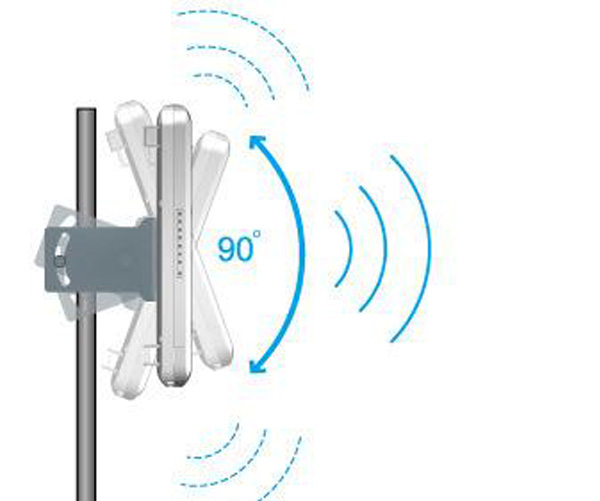In the early planning of the wireless monitoring project, many friends completed the deployment planning for monitoring points and wired networks, but they did not have the number of cameras on the wireless bridge. In fact, the wireless bridge as a video signal transmission channel, the planning is not so complicated.
When deploying bridges, the main factors that need to be considered are: camera occupancy bandwidth, bridging distance, and wireless bridge performance. If we can know the above three variables, we can easily get the selection and quantity planning of wireless bridges and surveillance cameras in monitoring projects.
Calculation formula for the number of load cameras: The number of cameras that can be taken is directly related to the bandwidth of the wireless bridge and the bitstream of the camera.
Camera takes up bandwidth
The transmission rate of the wireless bridge within a certain distance is basically fixed. How many cameras can be taken depends on how much bandwidth each camera will occupy, and the network bandwidth occupied by the camera can be measured by code stream or code rate.
It should be noted that there are two commonly used video coding standards: H.264 and H.265. The H.265 video compression performance for high resolution will increase about 40% compared to H.264. Therefore, H.265 video compression technology is used. Can effectively reduce the transmission bandwidth to save storage space, which is to use less bandwidth. The actual reserved bandwidth can be considered according to the actual use environment and the camera manufacturer's recommended values. The above code stream data can be used as a reference.
Bridging distance
Can be understood as the deployment of the predetermined transmission distance, intended to use wireless bridge transmission 1 km, 3 km, or 5 km? Different transmission distance, will affect the number of cameras. The transmission performance of wireless bridges decreases as the transmission distance increases. The closer the transmission distance, the more cameras the wireless bridge can bring, and vice versa.
The transmission distance of a wireless bridge is affected by many factors, such as the quality of the wireless bridge itself, the transmission rate, the antenna, the obstacle, the installation location, and the applicable environment. In the actual deployment, a reasonable transmission distance must be selected.
Wireless bridge transmission bandwidth and distance relationship
The transmission bandwidth of the bridge can be understood as the maximum transmission rate between the two bridges at this distance. Unlike the wired transmission medium, the wireless transmission is easily affected by external factors such as the environment. Therefore, some margin needs to be reserved in the project. .
When the same wireless bridge transmits different distances, its effective bandwidth (rate) is different. The closer the bandwidth is to the greater the distance, the farther the distance is, the smaller the bandwidth is. Therefore, the transmission distance of the wireless bridge is also an important factor influencing the number of connected cameras.
For example: Fengrunda 5.8G wireless bridge RD-W355CPE as an example, the transmission rate is 900Mbps, point-to-point transmission: Transmission distance within 1 km, with a maximum of 10 to 15 130W pixel network HD camcorder; and within 3 km, Up to 8 to 10 130W pixel network HD cameras.
Bridge performance
The overall performance of the wireless bridge will also affect the number of cameras, such as hardware and software configuration, operating frequency band, transmission rate, and antenna power. Wireless bridges with high quality, less interference, faster transmission speed, and higher antenna power have more cameras.
The 5.8G wireless bridge has less interference and faster transmission rate than the 2.4G wireless bridge. Therefore, the 5.8G wireless bridge can bring more cameras than the 2.4G wireless bridge. 5.8G wireless bridges are increasingly favored due to their high transmission bandwidth and strong anti-interference ability, and they have gradually become mainstream.
Having said so much, for everyone to summarize, how many cameras can be carried by a wireless bridge, you only need to know the camera's code stream, transmission distance, and bridge transmission rate.
Screw Thread Rolling Making Machine
The design and structure of the Thread Rolling Machine are reasonable and firm, with large main power, low noise, low failure rate, convenient adjustment and no random buckle. The thread processing has high precision and a wide range of applications. It can roll various external threads, including ordinary threads, trapezoidal threads and modular threads. It can also roll forming, rolling, and rolling on the workpiece. The product is driven by a worm gear, a worm, and an automatic lubrication system, which is easy to operate, and is equipped with manual control, pedal control, semi-automatic control and automatic control. With high production efficiency and low labor intensity, it can process various types of ordinary bolts and various special-shaped bolts with corresponding thread rolling wheels.
